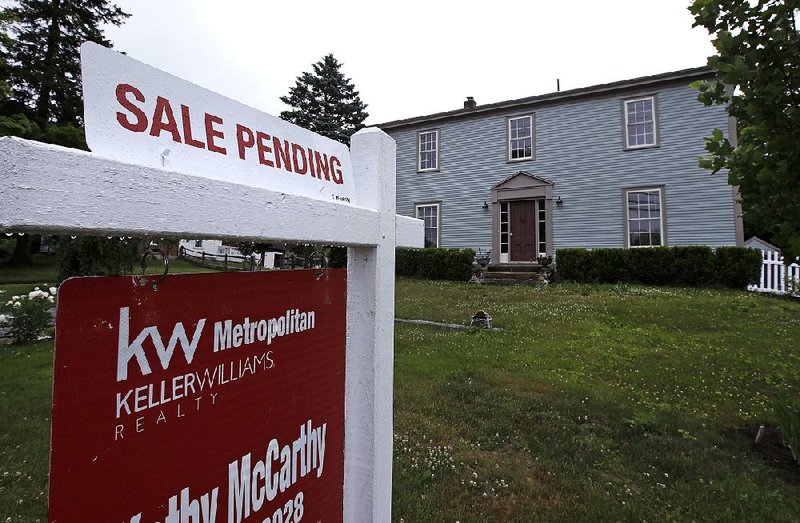WASHINGTON -- More Americans signed contracts to buy homes in January as lower mortgage rates appeared to give the real estate market a boost.
The National Association of Realtors said Wednesday that its pending-home sales index rose 4.6 percent last month to 103.2. The rebound has come as average 30-year mortgage rates have fallen since peaking at nearly 5 percent in early November. Still, higher mortgage rates in 2018 depressed pending sales by 2.3 percent over the past 12 months.
The increase suggests that home sales may rebound this year after months of flagging purchases. Key to any increase in sales is 30-year mortgage rates, which slipped last week to an average of 4.35 percent, according to mortgage buyer Freddie Mac, the Federal Home Loan Mortgage Corp. Lower borrowing costs improves affordability for homes, which until recently have generally seen their prices climb faster than wages.
There are emerging signs that home sales might recover after a slump in home construction in December. Pending sales improved in the pricey markets of Seattle, Boston and San Jose, Calif., according to a report by the brokerage Redfin.
Redfin data show that pending sales jumped 15 percent in the Seattle area during January, 4 percent in Boston and 8 percent in San Jose.
The Realtors' pending-sales index improved in the Northeast, Midwest, South and West in January. Signed contracts jumped 8.9 percent in the South, where homes are generally more affordable. But in the pricier West, the increase was just 0.3 percent.
Pending sales are a barometer of home purchases that are completed a month or two later.
The number of homes being built in December fell to the lowest level in more than two years, the Commerce Department said Tuesday. Housing starts fell 11.2 percent in December from the previous month to a seasonally adjusted annual rate of 1.08 million. This is the slowest pace of construction since September 2016.
Over the past 12 months, housing starts have tumbled 10.2 percent. December's decline occurred for single-family houses and apartment buildings. Builders have pulled back as higher prices have caused home sales to slump, suggesting that affordability challenges have caused the pool of would-be buyers and renters to dwindle.
"Artificially high prices have created affordability constraints, resulting in a situation where builders cannot deliver supply in scale," said Brad Dillman, chief economist for the multifamily developer Cortland. "The result is that today's housing market is undersupplied."
A report released Tuesday showed home prices in 20 U.S. cities rose in December at the slowest pace in four years.
The S&P CoreLogic Case-Shiller index of property values increased 4.2 percent from a year earlier, after a downwardly revised 4.6 percent in the previous month, data showed Tuesday, below the median estimate of economists. Nationally, home prices climbed 4.7 percent, the least since 2015.
The increase in 20 cities, which also matched the smallest since 2012, adds to signs of weakness in housing despite the pullback in mortgage rates. Affordability remains a challenge for consumers who have been whipsawed by stock markets, the trade war and a government shutdown. A report last week showed sales of previously owned U.S. homes fell last month to the weakest pace since November 2015.
Information for this article was contributed by Josh Boak of The Associated Press and by Jeff Kearns and Christine Maurus of Bloomberg News.
Business on 02/28/2019
